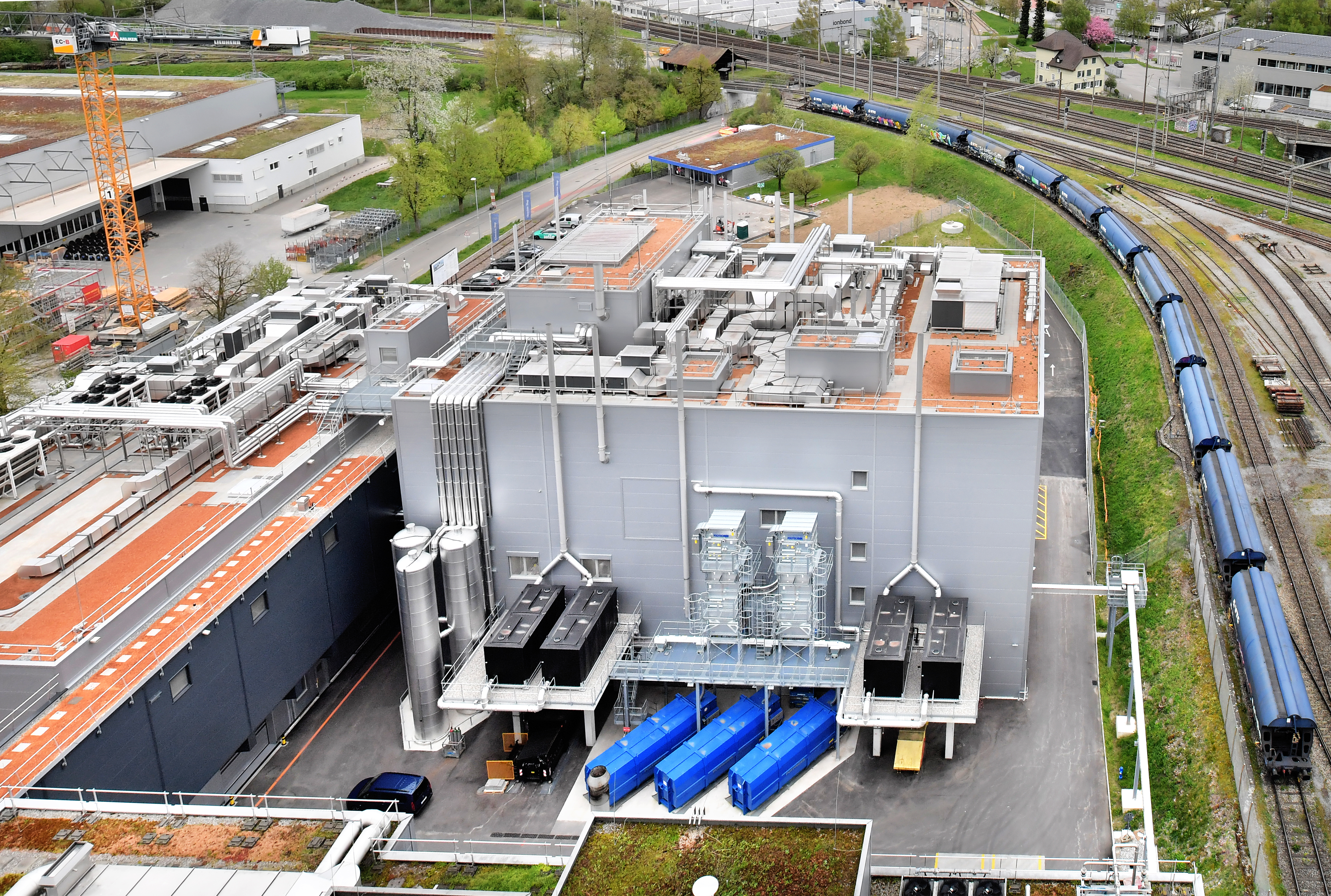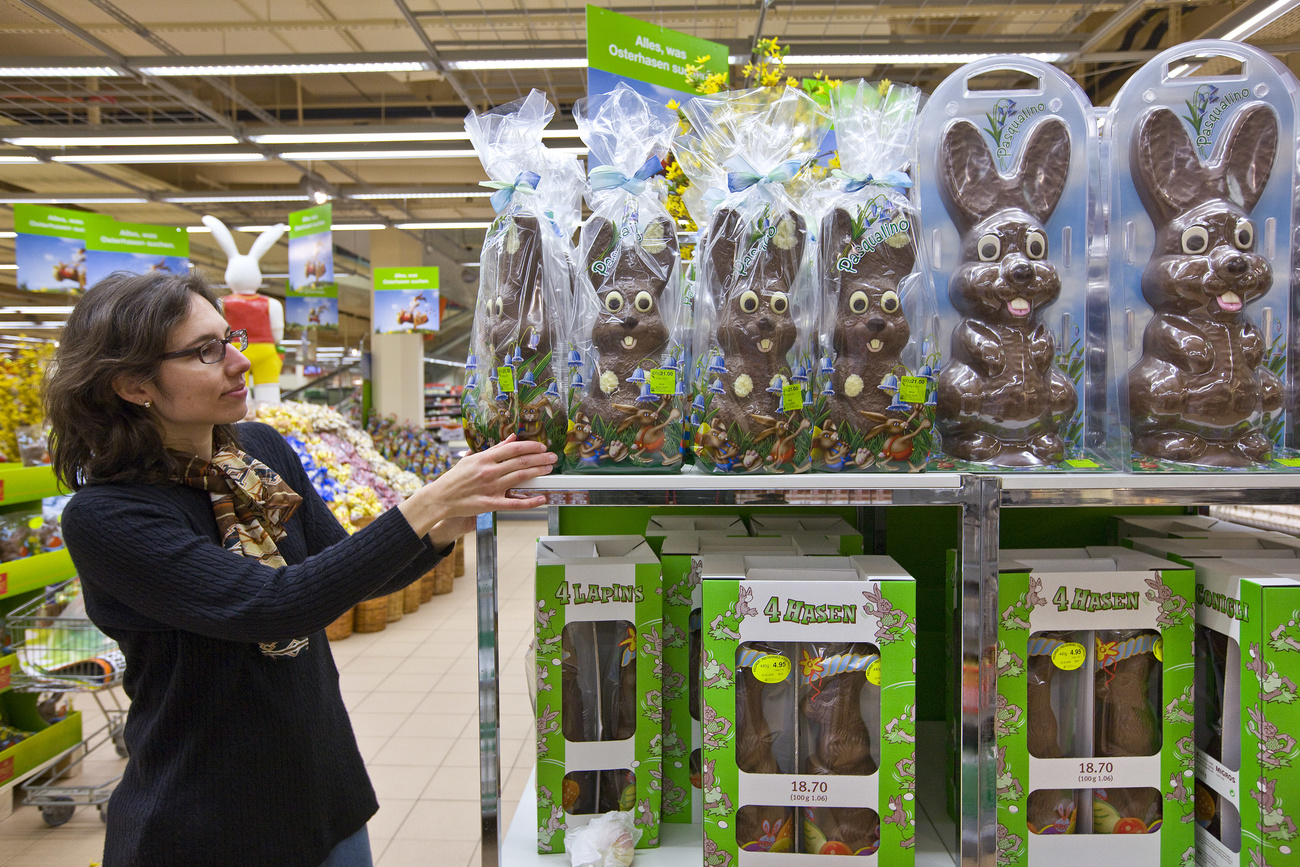Swiss chocolate giant Lindt’s expansion plans face a cocoa price roadblock

The Lindt & Sprüngli group has just inaugurated a CHF100 million expansion of its cocoa mass production factory in Olten, Switzerland. High cocoa prices could leave the brand-new machines underutilised.
Olten, a Swiss rail network hub near the capital Bern, is where cocoa beans are delivered by cargo train to the Lindt factory to be transformed. They are cleaned, roasted and crushed to form a viscous cocoa mass that is the starter material for the production of chocolate. And Lindt wants more of it.
On Friday, the company inaugurated a CHF100 million (about $110 million) expansion of the cocoa mass factory. Work began in 2021 and the completed expansion boasts new production lines, a new loading bay for cocoa mass and a state-of-the-art laboratory.

The company’s doubling of its cocoa mass production capacity comes at an awkward time when cocoa prices are at record highs on the global market. SWI swissinfo.ch spoke to Marco Peter, CEO of Lindt & Sprüngli Switzerland, to find out how the company plans to ride out the crisis.
SWI: How important is this expansion strategically for the Lindt & Sprüngli group?
Marco Peter: For us it is very important. We need to anticipate the volume needs of the near- and mid-term future to support the continuous growth that we’ve been having.
SWI: In terms of timing, you now have cocoa prices going up quite a lot and even crossing the $10,000 per tonne mark recently. Isn’t it problematic to have all this extra capacity at this time when prices are so high?
M.P: You can’t always get the optimal timing. When we decided to start this project four years ago it was a different situation on the cocoa market. Yes, the extra capacity may not be needed in the very short term but nobody knows what the future will bring.
This production line will be active for 20 to 40 years depending on how much retrofitting we can do. In the long-term we think we made the right decision. Don’t forget we are historic company that is almost 180 years old. We need to set up the whole group and production network in order to be successful for the next 180 years hopefully.
SWI: Lindt & Sprüngli announced that chocolate prices are increasing this year and also in 2025. What does this strategic expansion mean for consumers who are now grappling with inflation and the higher cost of some of your products?
M.P: By investing in new machinery we have modern technology with higher efficiency and food safety. However, purely from a capacity increase point of view there isn’t a direct correlation to the end consumer.

More
How much more are you willing to pay for Swiss chocolate?
SWI: How do you see this expansion as a commitment to Switzerland as a hub and headquarters of your business?
M.P: Our roots are in Switzerland and we hold true to them. This investment is in a hub for our other European production factories in Germany and Italy. It has added strategic relevance because we can produce cocoa mass made in Switzerland also for chocolate made outside Switzerland.
SWI: As of now Europe still remains your biggest market but there are a lot of regulations unfurling there like the ones addressing deforestation and human rights. How difficult is this going to make it to source cocoa beans for your factory?
M.P: With our Cocoa Farming ProgramExternal link since 2008, sustainability is something close to our heart for quite some time. We have the traceability into these cocoa origins.
We think we are well set up for the new regulations although there is some uncertainty with how the EUDR (European Union Deforestation RegulationExternal link) especially will be implemented across the entire industry, not just in Switzerland or within Europe but also third countries.
Whether it has a disruptive effect on where we source cocoa remains to be seen. I think the most pressing issue at the moment is the price of cocoa.

SWI: The CFO of American confectionery heavyweight Mondelez Luca Zaramellahas said that he expects a price correction in September or October as the data for the new crop becomes available. Do you see the price of cocoa stabilising soon?
M.P: The yield of that harvest will be an important factor. It remains to be seen if demand will go down but I guess with price increases the demand will self-correct.
What we still have though is a deficit. There was less yield than what was used to produce chocolate for about two years now. Then you still have weather and disease to consider. I don’t have a crystal ball.
We know the last time we had disruptive cocoa prices was in the 1970s. It was a long journey of about five years until we had a return to normal.
SWI: Chocolates have more brand loyalty among consumers than other products. Do you think this is going to be tested in the next few years looking at how prices are going up?
M.P: Definitely. That’s where we see opportunity with our strong brands and our premium positioning. People are already willing to pay more for the excellent quality that we deliver.
How high chocolate prices can go depends on the cost of raw material. Compared to our competitors we are in a good position.
Edited by Mark Livingston

In compliance with the JTI standards
More: SWI swissinfo.ch certified by the Journalism Trust Initiative

You can find an overview of ongoing debates with our journalists here . Please join us!
If you want to start a conversation about a topic raised in this article or want to report factual errors, email us at english@swissinfo.ch.